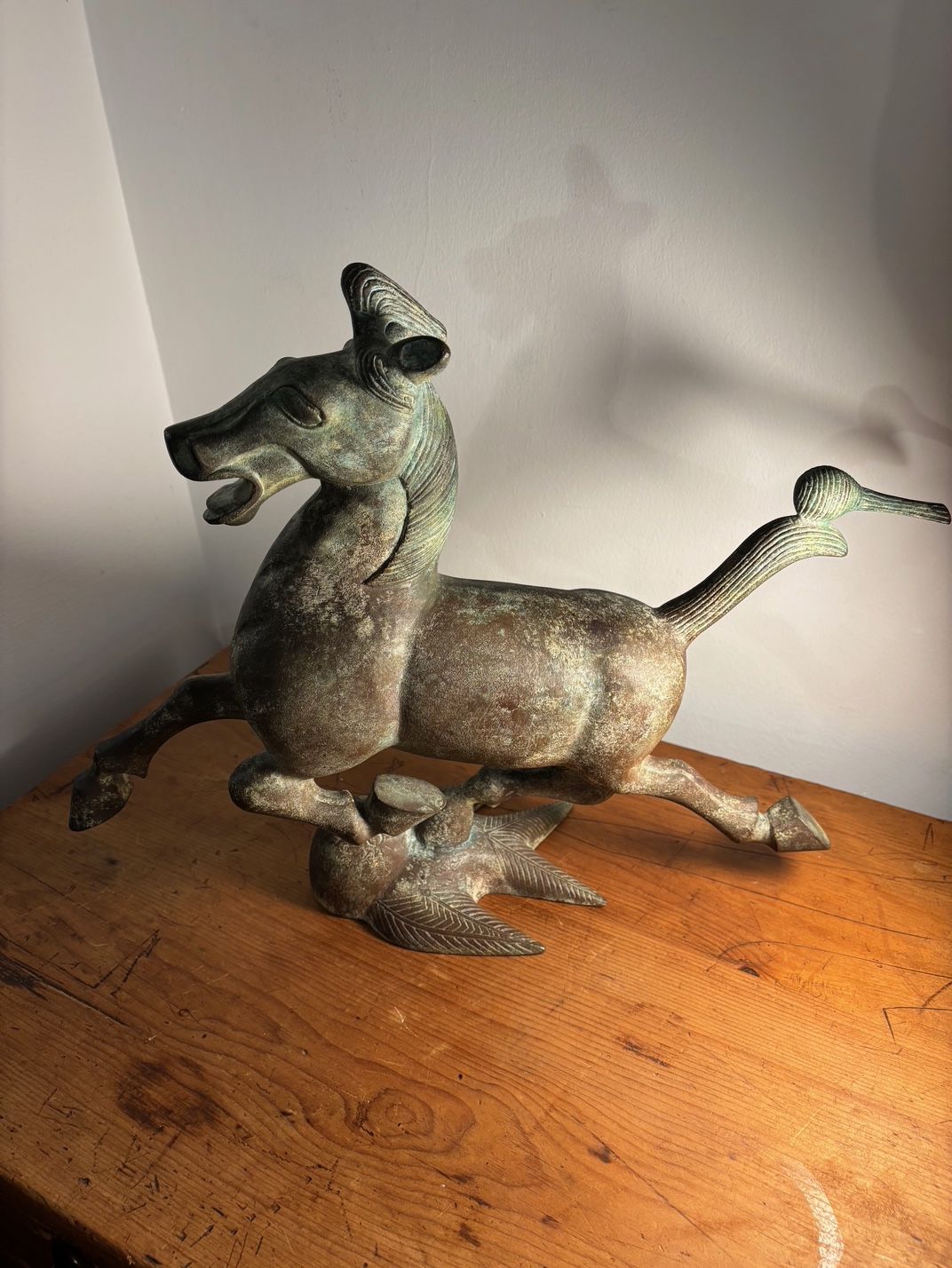Cast bronze replica of the Flying Horse of Gansu
SKU 1899
£275.00
Sold out
Sold out
Product Details
“Flying Horse of Gansu”
Cast Bronze
This bronze statue is a replica of the "Flying Horse of Gansu," a famous Chinese sculpture from the Han dynasty (206 BC - 220 AD).
The original sculpture, also known as "Galloping Horse Treading on a Flying Swallow," was discovered in 1969 in the tomb of a Han dynasty general.
It is considered a masterpiece of Chinese bronze art and is now housed in the Gansu Provincial Museum.
The statue depicts a horse in full gallop, balanced on a single hoof on a flying swallow, symbolizing speed and grace.
"Perfectly balanced," says one authority, "on the one hoof which rests without pressure on a flying swallow, it is a remarkable example of three-dimensional form and of animal portraiture with the head vividly expressing mettlesome vigor."
The discovery was made by a team of locals who had been told to dig air-raid shelters in the case of an imminent war with the Soviet Union. During the excavations, they found a chamber under a monastery which held a group of over 200 bronze figurines of men, horses, and chariots, which they put in plastic bags and took home.
They later realized the importance of their find and reported it to provincial authorities. Professional archaeologists then took up the excavations. They discovered a three-chambered tomb which had apparently been entered by looters soon after the original burial some 2,000 years earlier. The looters had not, however, entered the chamber in which the bronzes were found. The archaeologists determined that the opulent tomb was that of a Han dynasty army general who had been given the important task of maintaining imperial frontier defences. They took the bronzes to the museum in Lanzhou.
In Lanzhou, the group of bronzes was observed by Guo Moruo, China's elder statesman of archaeology and history, who was conducting Cambodian Prince Sihanouk on a tour of China. Guo was struck by the beauty of the horse and selected it for national and international exhibition
Height 37 cm
Width 50 cm
Depth 12 cm
Save this product for later
Cast bronze replica of the Flying Horse of Gansu
Display prices in:GBP
